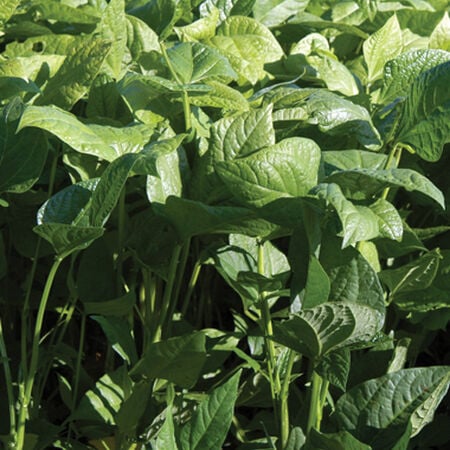Iron and Clay, Cowpea Seeds
Key Attributes
Key Attributes
Product Details
Weight
1Depth
1.1Height
6Width
9Plant Height
24-36"Sub Type
CowpeasBotanical Name
Vigna unguiculata L.Seed Type
SeedSeeds Per Gram
10Seeds Per Pound
4,600Best Time To Sow
May-AugustSow Depth
1/2"Broadcast Rate Per Acre
70-120 lbs.Seeds Per Ounce
288Breed
Open-pollinatedSun
Full SunLife Cycle
AnnualCategories
CowpeasGermination
3,4,5,6,7,8Days To Maturity (# Days)
80Seeds Per Acre
120 lbsComponents
Growing Instructions
![]() Learning Download: How to Grow Cowpea
Learning Download: How to Grow Cowpea
Cowpea, also known as Southern Peas and Black-eyed Peas, are a very heat-tolerant legume which makes them a good choice for a home garden. Cowpea grows in bush, vine, tall and short varieties. The leaves of the cowpea plant are edible when they’re young, but most gardeners grow them for the pea.
Before Planting: Cowpeas grow best in full sun in rich, well-drained soil.
Planting: Plant cowpea seeds outdoors once the last frost date has passed. Sow them directly into the garden. Plant seeds 2 inches deep and 3 inches apart in rows set 3 feet apart. Plant the seeds with the eye of the seed facing down.
Watering: Water frequently. When you water, try to keep from getting water on the plant’s leaves.
Fertilizer: Cowpeas grow quicker if fertilizer is applied immediately after planting. Once the plants are established, they generally do not require frequent fertilization. However, if the plant’s green leaves become pale, this means they are experiencing a nitrogen deficiency. They can then be fertilized with fish emulsion or nitrogen-rich fertilizers.
Days to Maturity: Cowpeas take 80 days or more to become ready for harvest. If growing on a vine, they will need some support like a pole or fence during their growth.
Harvesting: Cowpea pods can get up to 6 to 10 inches in length and look similar to green beans. Pods can be harvested when they’re young, as well as when they’ve dried. If harvesting while green, pick the pods when they are very young. To harvest dry cowpea pods, pick after the pods have dried on the vine.
Tips: Do not plant cowpea seeds in the same spot in the garden more than once every four years. Cowpeas grow well near corn, strawberries and cucumbers, but do not plant them near fennel or onions.
Shipping Schedule
Our Seed Promise
 "Agriculture and seeds" provide the basis upon which our lives depend. We must protect this foundation as a safe and genetically stable source for future generations. For the benefit of all farmers, gardeners and consumers who want an alternative, we pledge that we do not knowingly buy or sell genetically engineered seeds or plants.
"Agriculture and seeds" provide the basis upon which our lives depend. We must protect this foundation as a safe and genetically stable source for future generations. For the benefit of all farmers, gardeners and consumers who want an alternative, we pledge that we do not knowingly buy or sell genetically engineered seeds or plants.
The mechanical transfer of genetic material outside of natural reproductive methods and between genera, families or kingdoms, poses great biological risks as well as economic, political, and cultural threats. We feel that genetically engineered varieties have been insufficiently tested prior to public release. More research and testing is necessary to further assess the potential risks of genetically engineered seeds. Further, we wish to support agricultural progress that leads to healthier soils, to genetically diverse agricultural ecosystems, and ultimately to healthy people and communities.
To learn more about the "Safe Seed Pledge" please visit www.councilforresponsiblegenetics.org.

